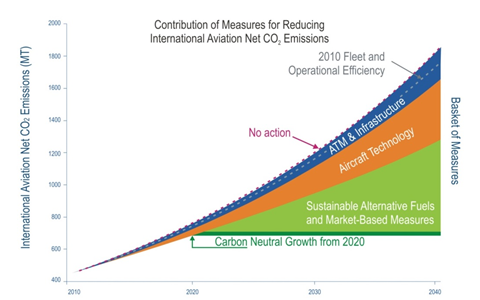Environmental Protection – Home
Ninth Meeting of the Committee on Aviation and Environmental Protection
Amendments to Annex 16
Environmental Symposium
38th Assembly Outcomes
Global Aspirational Goals
Technological and Operational Measures /ASBUs
Sustainable Alternative Fuels for Aviation (SUSTAF)
Market-based Measures (MBMs)
States’ Action Plans
Assistance to States
Cooperation with other United Nations Bodies
Carbon Inventory and Climate Neutral Initiative
ICAO Environmental Tools
Outreach and Public Awareness Activities
Voluntary Support for ICAO’s Environmental Work
Technical Cooperation Projects
The 38th Session of the Assembly considered the global CO2 trends assessment, which reflected the consensus agreement of CAEP and estimated the contribution of various categories of mitigation measures to reduce aviation CO2 emissions (aircraft and engine technologies, operational improvements and alternative fuels) in order to measure current, and estimate future, progress toward the achievement of the global aspirational goals adopted by the 37th Session of the Assembly (see CAEP Emissions Trends, below).
ICAO has also been developing the means to allow the Organization to regularly report CO2 emissions from international aviation to the United Nations Framework Convention on Climate Change (UNFCCC) process, as agreed by the 37th Session of the Assembly.
CAEP International Aviation Net CO2 Emissions Trends

The CO2 trends assessment was recommended as the basis for decision-making during the 38th Session of the Assembly, which subsequently adopted the collective global aspirational goals for the international aviation sector of improving fuel efficiency by two per cent per year and from 2020 keeping net CO2 emissions at the same levels (i.e. carbon neutral growth from 2020).
The Assembly also requested the Council to review the medium-term global aspirational goal of carbon neutral growth from 2020 and continue to explore the feasibility of a long-term global aspirational goal for international aviation.
